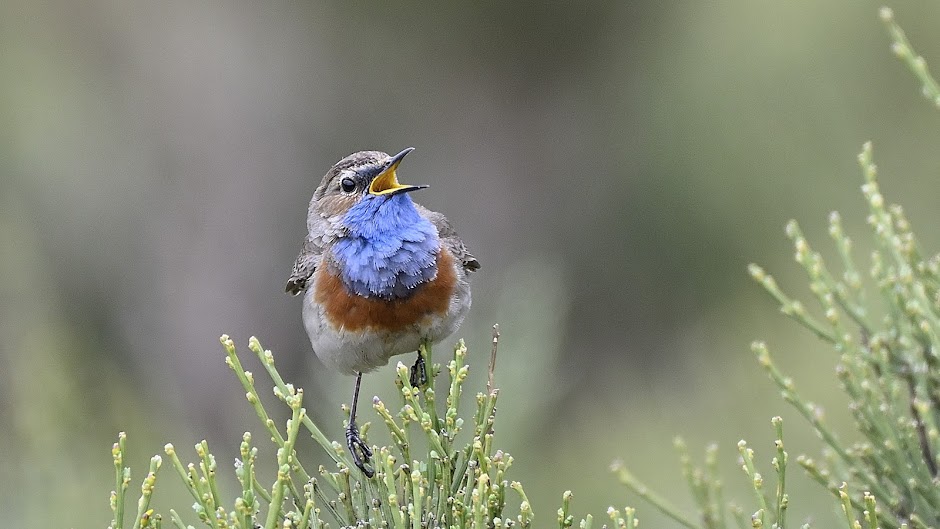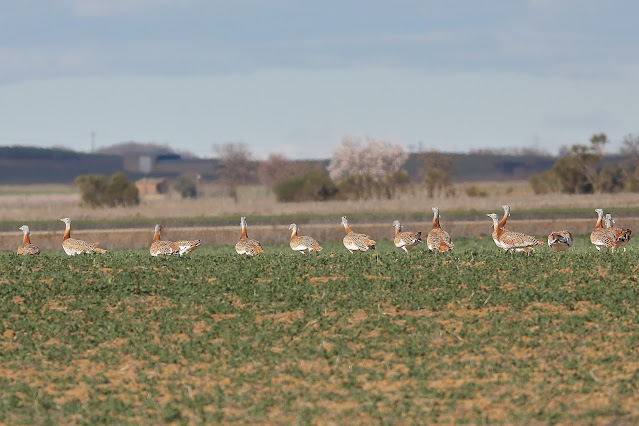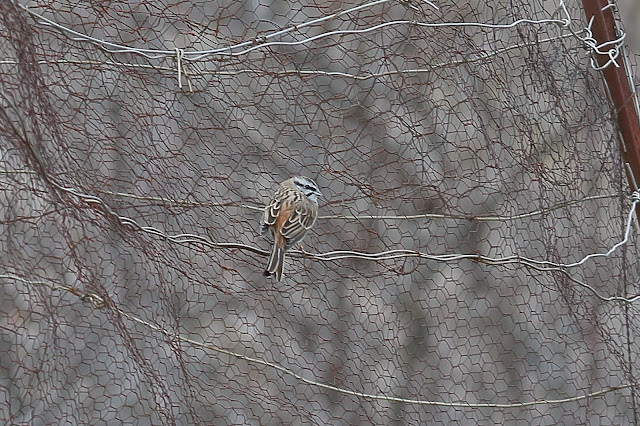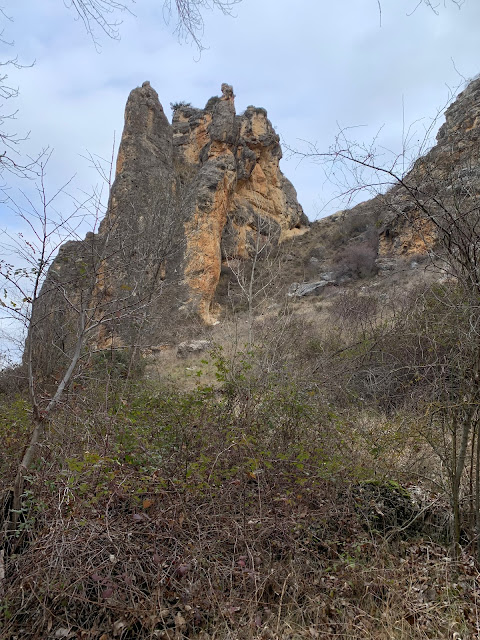Hola una vez más.
Hi again.
Hi again.
En el siguiente enlace podéis ver nuestros próximos viajes fotográficos y de observación de aves y mamíferos nacionales y al extranjero. Espero que os gusten y os animéis a venir conmigo. Una experiencia que nunca olvidareis.
In the following link you can see our next national and foreign Birds and Mammals photographic and observation trips. I hope you like them and I encourage you to come with me. An experience that you will not forget.
En esta ocasión os muestro algunas de la aves que pudimos ver en nuestro viaje organizado a la Reserva Natural Lagunas de Villafáfila el 5 de marzo. EL tiempo estuvo casi todo el día nublado pero no llovió.
This time I show you some of the Birds that we were able to see on our organized trip to the Lagunas de Villafáfila Nature Reserve on March 5. The weather was cloudy most of the day but it didn't rain.
Aunque era un poco temprano para ver las ruedas de la avutarda común (Otis
tarda) decidí poner esa fecha pues a partir del 15 de marzo la Consejería de Medio Ambiente de Zamora prohíbe la entrada de vehículos por los carriles. Además, para poder ir por la mayoría de los carriles en donde suelen estar la avutardas, es necesario obtener una autorización, que yo ya había solicitado y obtenido, pero en ningún caso puedes circular por los los mejores carriles para la observación de estas aves desde el 15 de marzo al 1 de junio. En mi modesta opinión, las molestias que causas a las aves caminando por los carriles es muy superior a ir en coche por ellos pues las aves desconfían más de las personas andando por el campo que de los vehículos.
Although it was a bit early to see Great Bustard display, I decided to set that date because as of March 15, the Zamora Ministry of the Environment prohibits the entry of vehicles through many Tracks. In addition, to be able to go through most of the lanes where Great Bustards usually are, it is mandatorial to obtain an authorization, which I had already requested and obtained, but in no case can you circulate through the best lanes for the observation of these Birds from 15 to June 1st.. In my humble opinion, the inconvenience caused to Birds by walking along rails is much higher than going by car because the Birds are more suspicious of people walking in the countryside than of vehicles.
Nada más llegar al Parque Natural, ya comenzamos a ver los primeros grupos de esta gran y bonita ave que es muy abundante en este lugar.
As soon as we arrived at the Natural Park, we began to see the first groups of this large and beautiful Bird that is very abundant in this place.
Como de costumbre, la refracción era muy grande y dificultaba muchísimos la obtención de fotos y el avistamiento a través de los telescopios terrestres. De todos modos ya pudimos observar las primeras ruedas.
As usual, refraction was very high and made it very difficult to obtain photos and sightings through ground-based telescopes. Anyway, we could already see the first displays.
Como yo sabia por mi experiencia en este lugar, a partir de las 5 de la tarde la refracción baja mucho y la observación de las avutardas se hace mucho mejor. Por ello, decidí ir a ver que aves había por la lagunas y su entorno. En la foto un grupo de combatientes (Calidris
pugnax) y correlimos comunes (Calidris
alpina).
As I knew from my experience in this place, after 5 pm refraction drops a lot and the observation of the Bustards becomes much better. For this reason, I decided to go to see what Birds there were in the lagoons and their surroundings. In the photo a group of Ruffs and Dunlins.
Había un inmenso bando de chorlitos dorados europeos (Pluvialis
apricaria).
There was a huge flock of European
Golden Plovers.
Que al paso de un aguilucho lagunero occidental (Circus
aeruginosus) se pusieron a volar.
That at the approach of a Eurasian Marsh
Harrier they began to fly.
Siempre parece que hay menos aves en vuelo de las que te piensas. por eso las he contado como he podido. El número es muy aproximado.
It always seems that there are fewer birds in flight than you think. That is why I have counted them as best I could. The number is very approximate.
Par complicar aun más la cosa en cuanto a conteo se refiere, cuando iban muy altos se le unió otro gran grupo y en esta foto no recoge todos los que había pues no entraban en ella. Impresionante.
To further complicate the matter in terms of counting, when they were very high, another large flock joined them and in this photo they do not include all of them because they did not fit into it. Awesome.
Antes del almuerzo hicimos una visita al la Casa del Parque a ver que veíamos por allí. Había varias cucharas comunes (Spatula
clypeata).
Before lunch we made a visit to the Casa del Parque to see what we could spot there. There were several Northern
Shoveler.
Siempre se me va la vista a los machos al ser más bonitos. Además en esta época del año están preciosos.
I always lose sight of males for being prettier. Also at this time of year they are at its best.
Macho de ánade azulón (Anas
platyrhynchos).
Mallard male.
Un grupo de avefrías europeas (Vanellus
vanellus) y estorninos pintos (Sturnus vulgaris).
A flock of Northern
Lapwing and Common Starlings.
Ánsares comunes (Anser
anser).
Greylag
Geese.
En el recinto de recuperación de las avutardas comunes (Otis
tarda) había un único macho que me dijeron que tenía tres años. Como se puede apreciar aun no tiene los barbas de los adultos.
At the Great Bustard recovery enclosure there was a single male who I was told was three years old. As you can see he still doesn't have the adult beards.
La avutarda común son grandes
aves pertenecientes a la familia de los Otidae y es el único
representante del género Otis. Se la conoce con el nombre científico de Otis
tarda. Hay reconocidas dos subespecies, Otis tarda tarda que está
distribuida por Europa, norte de África y oeste de Asia. La otra subespecie es
la Otis tarda dybowskii que son los ejemplares del este de Asia. Las poblaciones de África y
Europa son sedentarias mientras que las asiáticas hacen migraciones desde el
norte hasta el sur para pasar el invierno. Aunque son una especie
considerada como residentes, es cierto que realizan movimientos estacionarios
de bastante distancia relacionados con las estaciones del año, siendo las
hembras las que más realizan este tipo de desplazamientos. En cualquier caso,
se trata de un ave gregaria. En España se encuentran distribuidas
en las llanuras cerealistas de ambas Castillas y Extremadura y núcleos menos
importantes en Andalucía, Aragón y Murcia.
The Great Bustard is a large Bird belonging to the Otidae family and is the only representative of the Otis genus. It is known by the scientific name of Otis tarda. There are two recognized subspecies, Otis tarda tarda, which is distributed throughout Europe, North Africa and West Asia. The other subspecies is the Otis tarda dybowskii, which are the specimens from East Asia. The populations of Africa and Europe are sedentary while the Asians make migrations from the north to the south to spend the winter. Although they are a species considered as residents, it is true that they carry out stationary movements of quite a distance related to the seasons of the year, with the females being the ones that carry out this type of movement the most. In any case, it is a gregarious bird. In Spain they are distributed in the cereal plains of both Castillas and Extremadura and less important nuclei in Andalusia, Aragón and Murcia.
Son aves muy corpulentas y
pesadas que les gusta pasearse por los campos cerealistas de nuestro
territorio. Existe mucha diferencia entre los machos y las hembras en cuanto al
tamaño y su peso. Los machos pueden alcanzar una
altura de 90 a 105 centímetros y una envergadura de 2,1 a 2,7 metros. Su peso
oscila de 9,5 a 16 kilogramos, aunque el récord en España lo ostenta un macho
que llegó a pesar 19 kilogramos. Por ello la convierte en una de las aves
voladoras más pesadas del mundo. Además de su tamaño, el macho se
diferencia de la hembra por tener un tono más vivo en el dorso de castaños y
dorados. Además, el macho en plumaje nupcial presenta unas plumas largas,
apuntadas y rígidas que le nacen de la mandíbula inferior. Las hembras son sensiblemente más
pequeñas, un tercio en relación con los machos, midiendo 75 a 85 centímetros de
alto y una envergadura alar de 180 centímetros. Su peso medio es de 3,1 a 8
kilogramos.
They are very corpulent and heavy Birds that like to walk through the cereal fields of our territory. There is a lot of difference between males and females in terms of size and weight. Males can reach a height of 90 to 105 centimeters and a wingspan of 2.1 to 2.7 meters. Its weight ranges from 9.5 to 16 kilograms, although the record in Spain is held by a male who weighed 19 kilograms. This makes it one of the heaviest flying Birds in the world. In addition to its size, male differs from female by having a more vivid brown and gold hue on its back. Also, male in breeding plumage has long, pointed and stiff feathers that grow from the lower jaw. Females are noticeably smaller, a third in relation to males, measuring 75 to 85 centimeters in height and a wingspan of 180 centimeters. Its average weight is from 3.1 to 8 kilograms.
They are very corpulent and heavy Birds that like to walk through the cereal fields of our territory. There is a lot of difference between males and females in terms of size and weight. Males can reach a height of 90 to 105 centimeters and a wingspan of 2.1 to 2.7 meters. Its weight ranges from 9.5 to 16 kilograms, although the record in Spain is held by a male who weighed 19 kilograms. This makes it one of the heaviest flying Birds in the world. In addition to its size, male differs from female by having a more vivid brown and gold hue on its back. Also, male in breeding plumage has long, pointed and stiff feathers that grow from the lower jaw. Females are noticeably smaller, a third in relation to males, measuring 75 to 85 centimeters in height and a wingspan of 180 centimeters. Its average weight is from 3.1 to 8 kilograms.
También había algunas cigüeñuelas comunes (Himantopus
himantopus).
There were also some Black-winged
Stilt.
Y algunos porrones moñudos (Aythya
fuligula).
And some Tufted
Duck.
Ya fuera de la Casa del Parque, cuando comíamos vimos un grupo de avefrías europeas (Vanellus vanellus). En esta foto también se ve un macho de pardillo común (Linaria cannabina).
Outside the Casa del Parque, when we were having luch, we saw a group of Northern Lapwings. Also seen in this photo a Common Linnet male.
Durante toda la tarde estuvimos viendo muchos grandes bandos de avutarda común (Otis
tarda) que volaban de un lado para otro. A mi me extraño ver tantos pero no le di mayor importancia en aquel momento.
Throughout the afternoon we were seeing many large flocks of Great Bustard (Otis tarda) flying from one place to another. Although I was surprised to see so many, I didn't give it much importance at that time.
Mientras que esperábamos a que la refracción bajase, fuimos a ver que veíamos en a laguna Salina Grande que tenía muy poca agua. En la foto un macho de cuchara común (Spatula
clypeata).
While we waited for the refraction to go down, we went to see what we could spot in the Salina Grande lagoon, which had very little water. In the photo a male Northern
Shoveler.
Otro.
Another one.
Había varios grupos de agujas colinegras (Limosa
limosa).
There were several groups of Black-tailed Godwits.
Tarros blancos (Tadorna
tadorna).
Common Shelduck.
Y bastantes avocetas comunes (Recurvirostra
avosetta). También varias especies de anátidas pero todas demasiado lejos para sacarles una foto.
And quite a few Pied Avocet. Also several species of Ducks but all too far away to take a photo.
Después nos fuimos en busca de las avutardas comunes (Otis tarda). Encontramos un bando bastante grande de machos. Si mal no recuerdo había 64.
Afterwards we went in search of Great Bustards. We found a fairly large flock of males. If I remember correctly there were 64.
Estaban relativamente tranquilas.
They were relatively calm.
Ya había mucha menos refracción y con el telescopio terrestre se las veía con todo detalle.
There was already much less refraction and with the ground telescope we could be seen them in great detail.
Da gusto verlas como van caminando por el campo.
It's nice to see them as they are walking through fields.Como había llovido la noche anterior las huellas de las avutardas simunes (Otis
tarda) estaban bien marcadas en los caminos. Son muy grandes. fijaos que he puesto la moneda de un euro para que se pueda apreciar el tamaño.
As it had rained the night before, the tracks of the Great Bustards were well marked on the paths. They are very big. Notice that I have put the one euro coin so that you can appreciate its size.
Cuando estábamos disfrutando de ellas, un bando que estaba a contraluz un poco más alejado que este que observábamos, alzo el vuelo sin motivo aparente.
When we were enjoying them, a flock that was backlit a little further away than the one we were observing, took flight for no apparent reason.
Cuando pasaron a buena luz les pude sacar algunas fotos pero no al grupo al completo por la distancia focal del objetivo de mi cámara.
When they passed in good light I was able to take some pictures of them but not the whole group due to the focal length of my camera lens.
Al poco rato, paso otro bando que venía volando desde más lejos pero esta vez nos pasaron a contraluz. Se iban realmente lejos.
Shortly after, another flock came flying from further away, but this time they passed us against light. They really went far.
Al ver a este joven de águila real (Aquila
chrysaetos) me dio una idea de porqué estaban tan intranquilas las avutardas.
Seeing this juvenile Golden Eagle gave me an idea of why Bustards were so unsettled.
Después de ver al águila real (Aquila chrysaetos) tuvimos que dar muchas vueltas por los carriles hasta que encontramos algunos grupos de machos en los que algunos de ellos estaban haciendo la rueda.
After seeing the Golden Eagle we had to go around trails many times until we found some groups of males in which some of them were displaying.
Y con las últimas luces de la tarde decidimos regresar a Madrid.
And with the last light of the afternoon we decided to return to Madrid.
And with the last light of the afternoon we decided to return to Madrid.
Si queréis suscribiros a este blog de los viajes que hacemos pincha en el siguiente enlace: Suscribirse y haz clic en ¿Quieres suscribirte a nuestro blog?
If you want to subscribe to this post about the trips we do, click on the following link: Susbcribe and click on: Do you want to subscribe to our blog?
Espero que os haya gustado y hasta pronto.
I hope you like it and see you soon.

















































































































